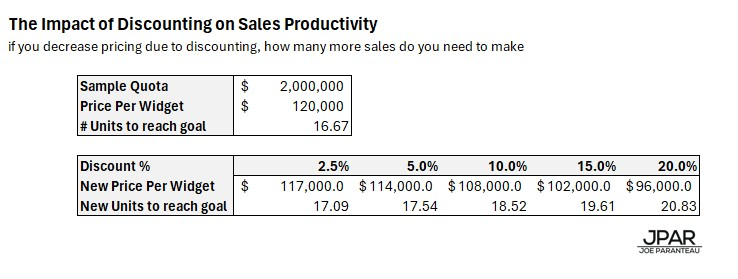Picture this: You’re a retailer trying to boost sales, offering discounts to attract customers. Sales skyrocket, but soon, you’re stuck in a never-ending cycle of slashing prices, hurting your brand and bottom line. This nightmare scenario is called the death spiral of discounting. But fear not! In this blog post, we’ll explore the dangers of discounting, the vicious cycle it creates, and, most importantly, strategies to break free and maintain profitability without relying on discounts.
Key Takeaways
Discounting can lead to decreased profits, customer churn, and long-term revenue loss. To break free from the death spiral of discounting, businesses must focus on financial health, budget management & cash flow, and investing in innovation & alternative growth strategies. Alternatives to discounts, such as loyalty programs and event-based marketing campaigns, can help maintain profitability while still providing value to customers.
The Dangers of Discounting

Discounting may look like a good way to increase sales, but comes with many risks. It can lead to customers expecting lower prices and ultimately reduce the long-term revenue for businesses.Profit margins might decrease so much that it is not enough to cover costs of gaining new customers. If over half of your clients refuse to pay full price in expectation for future discounts, this makes luring repeat customers even more patrons difficult, as well as creating problems for retail partners who cannot match such offers or lose faith on the worthiness of products/services you provide. This puts focus solely on lowest possible cost resulting in undervaluing advantages connected with them.Here’s a summary of how discounting impacts sales productivity.
Discounting negatively affects profitability brand value, customer relations. All these dangers should be taken into account when designing marketing strategy involving offering deals and special promotions.
The Death Spiral of Discounting: How It Begins
The discount death spiral may begin with an attempt to attract new customers through a reduced price. This tactic can result in higher sales initially. It begins the process of customer conditioning and expectancy for discounts, leading to lower average order values and consequently decreasing revenue. As companies feel pressure from this downward trend, they offer bigger deals more often, damaging profit margins and brand value. To avoid becoming unsustainable, businesses must prioritize financial health such as cash flow management, budgeting processes, debt reduction tactics, and investments into long-term growth strategies instead of relying on frequent discounted prices which bring decreases top line sales yet fails to cover expenses or provide a return on investment for shareholders.
The Vicious Cycle of Continuous Discounts
The perilous cycle of incessant discounts can be a treacherous snare for companies. As firms grow the amount and frequency of reductions to sustain sales, their profit margins may suffer, customers may drop out frequently and long-term income might take a dip. This is because purchasers begin expecting the lowest price or least expensive rate which could lead to customer discontentment and difficulty in keeping repeat consumers around.Always discounting brings about shops forfeiting their earnings just to stay up with increased supply as well as demand, causing them into the debtors column. An unsustainable tactic that threatens buyer relationships, possibly requiring fresh direction from top leadership team so they can address this predicament effectively by a new leadership and changing the company’s path ahead.Businesses should concentrate on other strategies for development instead of overdoing it with markdowns creating devaluing effects towards brand reputation while undermining profitability levels striving to escape such harrowing cycles.
Factors That Contribute to the Death Spiral of Discounting
The discount death spiral is a phenomenon of decreasing revenues due to inadequate financial management, which can result in more money than half the business resources being misused. Poor cash flow leads to difficulty paying bills and difficulties with investor or supplier confidence. A lack of innovation can also lead customers away from repeat purchases that could keep businesses afloat through discounts. This paired with debt levels not under control – plus uncontrolled expenses – sends profits plummeting downwards into an all too familiar downward cycle. Businesses must be particularly vigilant about monitoring their finances closely, nurturing ideas for fresh products/services while adapting quickly to changes within markets if they want any hope at warding off threats like these leading them down the path towards disaster i.e., a catastrophic ‘death spiral’.
Selling on Value, Not Discounts
So, what’s the solution? It’s simple – sell on value, not discounts. 💡 Instead of caving in at every discount request, empower your sales team to emphasize the unique value your product or service brings to the table. It’s about showcasing what sets you apart from the competition.
Strategies for Breaking Free from the Death Spiral
In order to break the vicious cycle of death spiral, it is important to adopt a pro-active attitude and focus on customer experience, innovation investment, prudent pricing policies, as well as establishing long term growth plans. It’s key for businesses when considering discounts that they bring mutual benefit both in terms of brand recognition and pleasing customers.Innovation plays an equally vital role here since not only does this differentiate them from competitors, but can help draw repeat clients. Businesses must look into maximizing cash flow so they have access to resources needed for expansion while still focusing on profit generation without overly relying on heavy discounting rates.Ultimately companies should be proactive in addressing factors associated with the death spiral. Pursuing strategic investments which are beneficial over time rather than short sighted benefits plus keeping their eye firmly set upon profitability levels throughout these endeavours instead solely depending thereupon deeply discounted offers made available at all times by any business entity nowadays.
The Role of Pricing Strategy in Avoiding the Death Spiral
The discount death spiral can be avoided through an effective pricing strategy that allows businesses to protect profit margins, preserve the perceived value of their goods and services, and dissuade customers from taking advantage of large discounts. Such a plan will ensure profitability for companies while keeping their brand recognition in the market.By creating higher prices as typical rather than running frequent sales events or providing deep markdowns, firms are able to deter extreme levels of discounting which would damage business profits or taint customer’s perception about said brands’ worthiness. This type of well-considered pricing approach not only helps brands maintain revenue but also safeguards valuable corporate identity associated with its products.
Alternatives to Discounting
Businesses looking to avoid discounting have various other solutions available, such as providing value-added services like free consultations and product samples or demos, setting up loyalty schemes that reward customers for repeat orders, and allowing shoppers to enjoy free shipping/gifts with their purchases and implementing promotional activities intended to create excitement surrounding products. These strategies can help companies boost revenue without reducing prices or adversely affecting growth by succumbing to the death spiral. Loyalty programs are especially beneficial in maintaining customer commitment while growing the average order value over values instead of simply cutting money off every transaction price tag through discounts. Offering extra advantages – i.e., complimentary delivery options or gifts – is an effective way of convincing buyers to part with more funds versus relying solely on discounted amounts when making a purchase decision, thereby avoiding any hitches caused due to consumer indecisiveness from plummeting sales figures brought about by competitive promotions and pricing tactics employed elsewhere.
Handling Discount Requests Like a Pro
When buyers ask for discounts, don’t panic. 🙅♂️ Instead, view it as an opportunity to engage in a meaningful conversation. Understand their needs and concerns, and demonstrate how your offering aligns perfectly with their goals. Sometimes, a well-articulated value proposition can make a discount request fade away.
Walking Away from Bad Deals
Not all deals are created equal. Some can be more trouble than they’re worth. 💼 It’s crucial to teach your sales team when to walk away from unprofitable or mismatched opportunities. Remember, your time and resources are valuable – invest them wisely.I called discounting the death spiral because your quota attainment may not recover from this practice. Here’s what a death spiral looks like. When I was in pilot training, it is required for every pilot to learn how to recover from a spin so it doesn’t become a death spiral. The pic doesn’t do it justice, so here is a video showing you (caution: language). It’s a rather descriptive look at what can happen. I recall one year when my team of 10 sellers discounted an entire territory’s annual quota. We still made our number, but the odds were stacked against us.

Accentuating Your Value Proposition
Highlight your unique selling points. 🌟 Showcase how your product or service addresses pain points, streamlines processes, or delivers exceptional results. Doing so will naturally shift the conversation away from discounts towards the inherent value you provide.
Case Studies: Companies That Overcame the Death Spiral
Companies in the throes of a death spiral can gain insights and strategies for escaping it from successful businesses. The key is to focus on core competencies, cut costs, rebuild trust with customers and investors, and invest in innovation and growth opportunities. These elements will help build customer confidence while creating revenue streams that are necessary for success over the long run without having to rely on discounts. Achieving these goals will also enable companies to set themselves apart from competitors, reverse their downward slide into profitability, and learn along this journey toward sustainability.
Tips for Maintaining Profitability Without Relying on Discounts
Maintaining profitability without discounting is possible with careful management of finances. Businesses should develop a budget, track cash flow and debt levels, reduce debt when needed, pay down, and invest in the business to prevent falling into what we call “the death spiral” – an irreversible downward slide due to excessive discounts. By monitoring revenues versus expenses and keeping cash on hand, businesses can spot any warning signs early on before they experience too much harm from spiraling downwards. Reducing costs while controlling spending helps ensure sustainable success that avoids relying heavily or exclusively on discounting for profit margins. For a company to reach its long-term goals and withstand inevitable challenges, it must consider investing money back in itself. This may look like buying new equipment or personnel training so services are improved instead of just resorting solely to lowered prices, which creates problems down the line, such as reducing profits even more significantly over time if not monitored correctly by proper fiscal management processes outlined at the beginning stages through implementing budgets etc.
Summary
Businesses need to take steps to evade the destructive discount death spiral if they wish to sustain growth and increase profitability. Knowing about this risk, deploying efficient pricing strategies, and researching options aside from discounts are all paths companies can explore so that their brand value does not diminish as a result of deep cuts on prices for an extended period of time. Companies that have experienced success by conquering the dangers associated with discounting should be studied closely for techniques towards building long-term achievement without relying heavily on devaluing discounts.
Frequently Asked QuestionsWhat is the death spiral in pricing?
A death spiral in pricing is a phenomenon companies encounter when attempting to quickly find how to reduce costs. They try to lower expenses not by lowering fixed charges but by deleting products or services, which increases long-term financial obligations and lowers production output numbers.
What is an example of a death spiral in business?
A business’s death spiral occurs when it relies too much on one client or market, and then that customer segment suffers an economic decline. This leads to the company being unable to create sufficient new income streams, which, coupled with poor financial management, can cause Deterioration in the organization’s fortunes, forming a downward slide. Thus, customers are key components of any business’s survival. Having multiple revenue sources is critical while also maintaining fiscal discipline through periods of change.
What causes the death spiral?
The tendency of our brains to rely on sensory cues can result in a death spiral where poor decisions are made due to overreliance on visual signals. This is how we are programmed by nature, taking mental shortcuts and using sight as the main decision-maker, which may lead us down hazardous paths. Making wise choices requires not to depend too heavily on these types of external stimulants but rather employ careful thought processes when making critical judgments or reaching conclusions.
How can businesses escape the death spiral?
To avoid the company’s dreaded death spiral, businesses must focus on providing an outstanding customer experience, innovate continuously, set competitive pricing, and invest in long-term growth for sustainable success.
What are some alternatives to discounting?
Providing services with added value, loyalty initiatives, and promotions such as free gifts or shipping options alongside event or store-based marketing efforts are great alternatives to discounting strategies.





